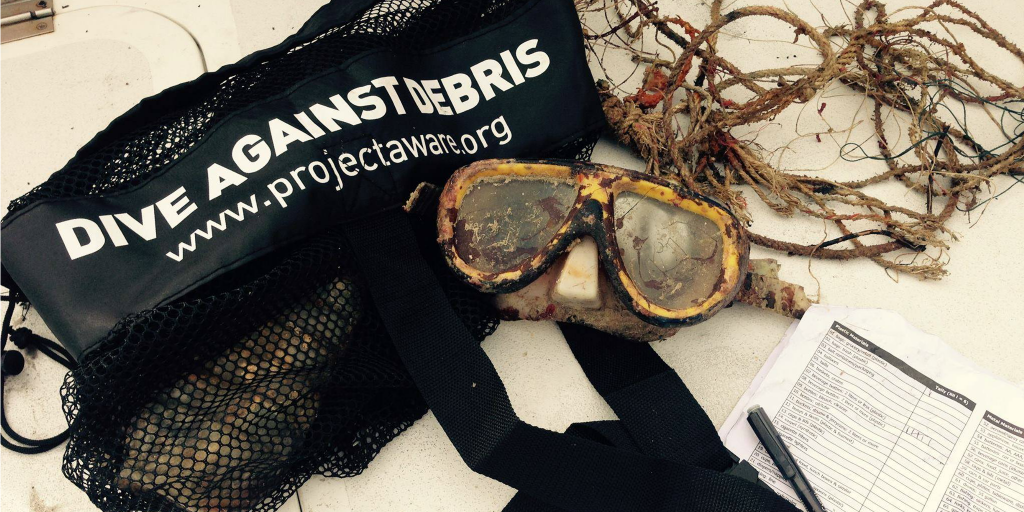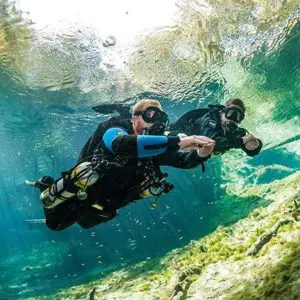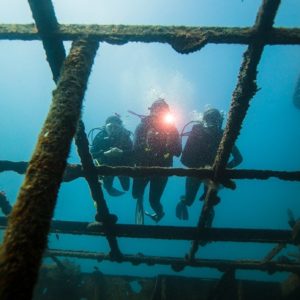Additional information
The ocean covers around two thirds of our planet and encompasses a diverse range of habitats, from tropical coral reefs to giant forests made of kelp. Scuba divers travel hundreds of miles across the world to appreciate this vast underwater world and the incredible creatures that call it home.
But the risk to this paradise is increasing at an alarming rate as discarded rubbish from the world above is turning once-pristine reefs into trash sites. Project AWARE’s Debris Snapshot showcases almost 90,000 items of rubbish – weighing over 32 tons – that divers removed and reported in 2015 alone. Worse still, it’s a massive danger to marine life. In many cases, divers are able to come to the rescue, but not all are as fortunate; 1,000 creatures were reported injured or killed as a result of marine debris in just one year.
What exactly is marine debris?
Marine debris is rubbish, trash, litter – items discarded after use by humans and which find their way into the ocean. You can learn more about the Ugly Journey of Our Trash in this video.
There’s a wide assortment of debris floating around the ocean, including plastic, cloth, metal, glass, ceramics, rubber, wood, paper and cardboard. Some of the more unusual items found so far include a full set of golf clubs, false teeth and a pogo stick! The sort of trash that’s especially dangerous to marine life includes cans and bottles, discarded fishing nets and carrier bags (mistaken for tasty jellyfish by turtles). It’s also a hazard to people who use the water and costs marine ecosystems billions of dollars each year.
How you can help tackle marine debris:
When it comes to marine debris, the adage “out of sight, out of mind” has never rang truer. Hidden below the surface, the extent and devastating results of the problem remain invisible to many people. Fortunately, as a diver and ambassador for the ocean planet, you have the ability to make a difference.
Project AWARE launched Dive Against Debris™ in 2011; today it unites over 21,000 divers in over 60 countries with the common goal of removing and reporting on marine debris.
By joining a Dive Against Debris survey, or even starting your own, you can join the movement and take important steps to help protect the ocean that you care about.Not only do Dive Against Debris surveys directly improve the quality of local sites, but the data collected helps influence policies and drive change needed to stop trash from reaching the ocean in the first place. Findings are also visualized on the Dive Against Debris™ Interactive Map to further highlight the quantity and type of marine debris littering our seas.
Improve your skills in dealing with debris:
If you’ve never taken part in an underwater clean-up activity before, or want some extra support when it comes to analyzing and reporting on your results, then start by downloading the free Dive Against Debris Survey Kit.
Recently extended to include 11 languages (English, German, Spanish, French, Italian, Dutch, Portuguese, Korean, Simplified Chinese, Traditional Chinese and Japanese), the Survey Kit is widely accessible and includes a survey guide, data card, marine debris identification guide and surveyor checklist.
If you want to take your Dive Against Debris skills to the next level (especially if you’re planning your own surveys), then take the Project AWARE Dive Against Debris™ Distinctive Speciality course. Available to PADI (Junior) Open Water Divers and above or equivalent, aged 12 years and older, the course:
- Educates on the topic of debris – what damage it causes, where it comes from and how you can help tackle the problem
- Equips divers with the skills on conducting a survey including dive profiles, photography techniques and decision-making skills on what to take, and what to leave
- Covers the 5 steps to record and report findings: weighing, sorting, recording, disposing and reporting
- Helps you join your efforts with the wider Dive Against Debris movement across the globe
Ask us about the course for more information. You can also book this course from this page.
Get started with Dive Against Debris today!
If you’re looking to give your dives added purpose then join the Project AWARE movement today. It’s easy to find a dive to take part in – just visit the Action Zone Map on Project AWARE’s website. If there isn’t one nearby, then download the survey kit and start planning your own!
Quick FAQ’s
Are there any restrictions or minimum requirements?
Anyone aged 12 years and over. You will also already need to be a qualified diver, such as PADI Open Water (or above) or BSAC Ocean Diver (or above). Maximum depth is based on your certification level but these are likely to be shallow dives.
What qualification will i receive after the course?
After successful completion of the course, you will be issued a PADI certification for Dive Against Debris Distinctive Specialty and counts towards your Padi Master Scuba Diver qualification.
How long is the course and what does it entail?
The course can be completed in 1 day and will involve some classroom based teaching along with 1 Dive Against Debris dive.
Dive Against Debris (TM) Specialty Course
From: ₱6,500
If you want to take your Dive Against Debris skills to the next level (especially if you’re planning your own surveys), then take the Project AWARE Dive Against Debris™ Distinctive Speciality course. Available to PADI (Junior) Open Water Divers and above or equivalent, aged 12 years and older, the course:
- Educates on the topic of debris – what damage it causes, where it comes from and how you can help tackle the problem
- Equips divers with the skills on conducting a survey including dive profiles, photography techniques and decision-making skills on what to take, and what to leave
- Covers the 5 steps to record and report findings: weighing, sorting, recording, disposing and reporting
- Helps you join your efforts with the wider Dive Against Debris movement across the globe
This course package includes 2 training dives, use of equipment, materials and resort fees. You will also receive your Project Aware Certification Card sent directly to your postal address from PADI.





